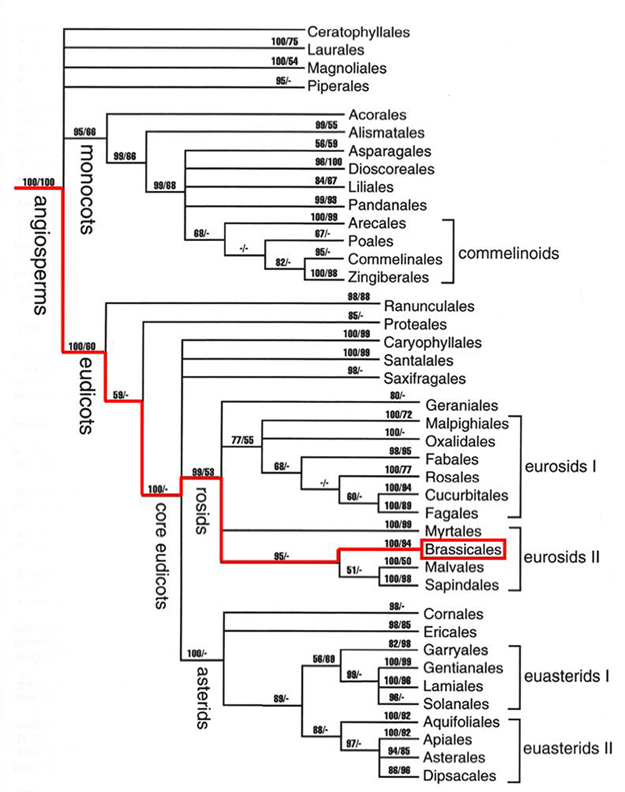Classification
Taxonomic Classification
Domain- Eukarya: Members of Eukarya are have
membrane-bound organelles such as mitochondria.. The cells
also possess a nucleus that contains DNA. Cell division is common,
including meiosis and mitosis
Clade- Angiosperms: These are flowering, seed producing , land plants. Horseradish has a white flower with endosperm Another Angiosperm
Clade- Eudicots: Eudicots have two cotyledons, flower in parts of 4 or 5, and exhibit secondary growth. Secondary growth is essentially growth in girth, much like how a tree trunk grows thick over time. In my opinion, the easiest way to classify a eudicot is to look at the veins in the leaves as it is usually net-like as opposed to one long vein in the center. A Monocot
Clade- Rosids: characteristics have not been entirely defined but rosids generally have more than 1 whorl of stamen , undergo nuclear endosperm development and reticulate pollen exine. To the naked eye, one can see that Horseradish has more than 1 stamen.
Order- Brassicales: These flowers produce glucosinolate which is “mustard oil”. As you may guess, mustard is in this order and the seeds are used for mustard oil in making mustard.
Family- Brassicaceae: This is most easily seen as there are 4 petals on the flowers forming a cross. This family is sometimes called cruciferae meaning cross bearing.
Genus- Armoracia: The only species in this Genus is Horseradish, as of today.
Species- Armoracia rusticana: Armoracia was the name given to the horseradish that grew all over a region in Armorica, with Aremoricus meaning “near the sea” in Celtic. This region was in France facing the English channel. Rusticana meaning “of the country”. So this name for horseradish is nowhere near a literal translation.
Common Name- Horseradish: It is believed that the common name Horseradish came from the German title "meerrettich" (sea radish) but the English misinterpreted it to be called "mare radish", eventually becoming Horseradish. Radish is Latin for "root" and the "horse" may come from the large size of the root.
 This
phylogenetic tree shows where flowering plants are placed in
comparison to other plants. This tree is based off of
morphological structures. Horseradish would fall in with the
"flowering plants" as it has seeds, is vascular, and flowers.
This
phylogenetic tree shows where flowering plants are placed in
comparison to other plants. This tree is based off of
morphological structures. Horseradish would fall in with the
"flowering plants" as it has seeds, is vascular, and flowers.
• http://www.emc.maricopa.edu/faculty/farabee/BIOBK/plantrelat.gif
This tree further defines the order Brassicales among other angiosperms.
 http://www.jstor.org/stable/2992015?seq=1
http://www.jstor.org/stable/2992015?seq=1
Angiosperm Phylogeny Group (APG). 1998. “An Ordinal Classification for the Families of Flowering Plants.” Annals of the Missouri Botanical Garden. 85(4): 531 – 553